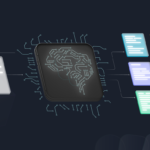The Role of Cloud Computing in Digital Transformation
Digital transformation has become a top priority for businesses across industries, enabling them to stay competitive and adapt to rapidly changing market dynamics. Cloud computing plays a crucial role in facilitating this transformation by providing scalable and flexible infrastructure, advanced technologies, and cost-effective solutions. In this blog, we will explore the role of cloud computing in driving digital transformation and its impact on businesses.
Scalable and Flexible Infrastructure
Cloud computing offers businesses the ability to scale their infrastructure resources on-demand. Whether it’s storage, computing power, or network capacity, businesses can easily scale up or down based on their needs. This scalability eliminates the need for large upfront investments in hardware and allows businesses to respond quickly to changes in demand, supporting their growth and agility in the digital era.
Cost-Effectiveness and Operational Efficiency
Adopting cloud computing can significantly reduce IT infrastructure and maintenance costs for businesses. Instead of investing in expensive hardware and software licenses, businesses can leverage cloud services on a pay-as-you-go model. This allows them to allocate resources more efficiently, optimize costs, and redirect IT budgets towards strategic initiatives rather than infrastructure maintenance. Cloud-based solutions also provide automatic updates and patches, minimizing downtime and improving operational efficiency.
Accelerating Innovation and Time-to-Market
Cloud computing enables businesses to innovate and bring new products and services to market faster. With cloud-based development platforms and tools, businesses can leverage pre-built functionalities and APIs to rapidly develop and deploy applications. This eliminates the need for building infrastructure from scratch, allowing developers to focus on adding value and creating differentiated experiences for customers. Cloud-based platforms also facilitate collaboration, enabling teams to work together seamlessly across geographies.
Advanced Technologies and Services
Cloud computing offers access to a wide range of advanced technologies and services that can drive digital transformation. Businesses can leverage artificial intelligence (AI), machine learning (ML), big data analytics, and internet of things (IoT) capabilities provided by cloud providers. These technologies can be integrated into business processes, enabling automation, intelligent insights, predictive analytics, and enhanced customer experiences. Cloud-based AI services, for example, can help businesses leverage AI capabilities without the need for significant expertise or infrastructure investments.
Enhanced Security and Data Protection
Cloud providers invest heavily in robust security measures, including encryption, access controls, and regular security audits. By moving data and applications to the cloud, businesses can often improve their security posture and protect against cyber threats. Cloud providers also offer data redundancy and disaster recovery capabilities, ensuring business continuity in case of system failures or natural disasters. However, it’s essential for businesses to understand their shared responsibility in securing their data and implementing proper security measures.
Global Reach and Scalability
Cloud computing enables businesses to expand their reach globally by providing infrastructure and services in multiple regions. This is particularly beneficial for businesses with international operations or those looking to enter new markets. With cloud-based solutions, businesses can easily deploy applications and services to users around the world, ensuring low latency and a consistent experience across geographies. This global scalability helps businesses tap into new opportunities and cater to diverse customer bases.
Collaborative Work Environments
Cloud computing facilitates collaborative work environments by providing seamless access to data and applications from anywhere, at any time, and on any device. This allows geographically dispersed teams to collaborate effectively, enhancing productivity and innovation. Cloud-based collaboration tools enable real-time document editing, virtual meetings, and instant communication, fostering teamwork and improving organizational efficiency.


































